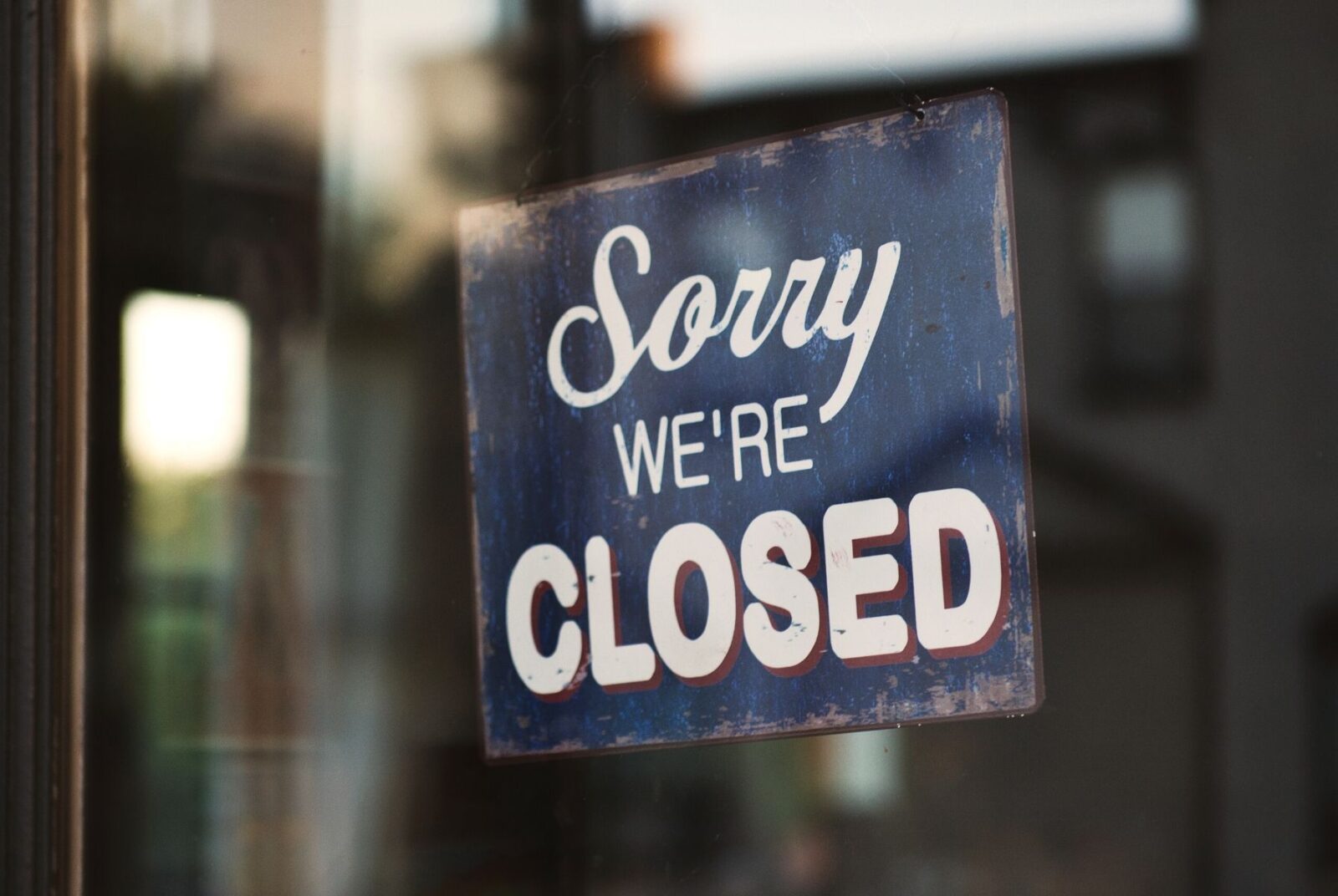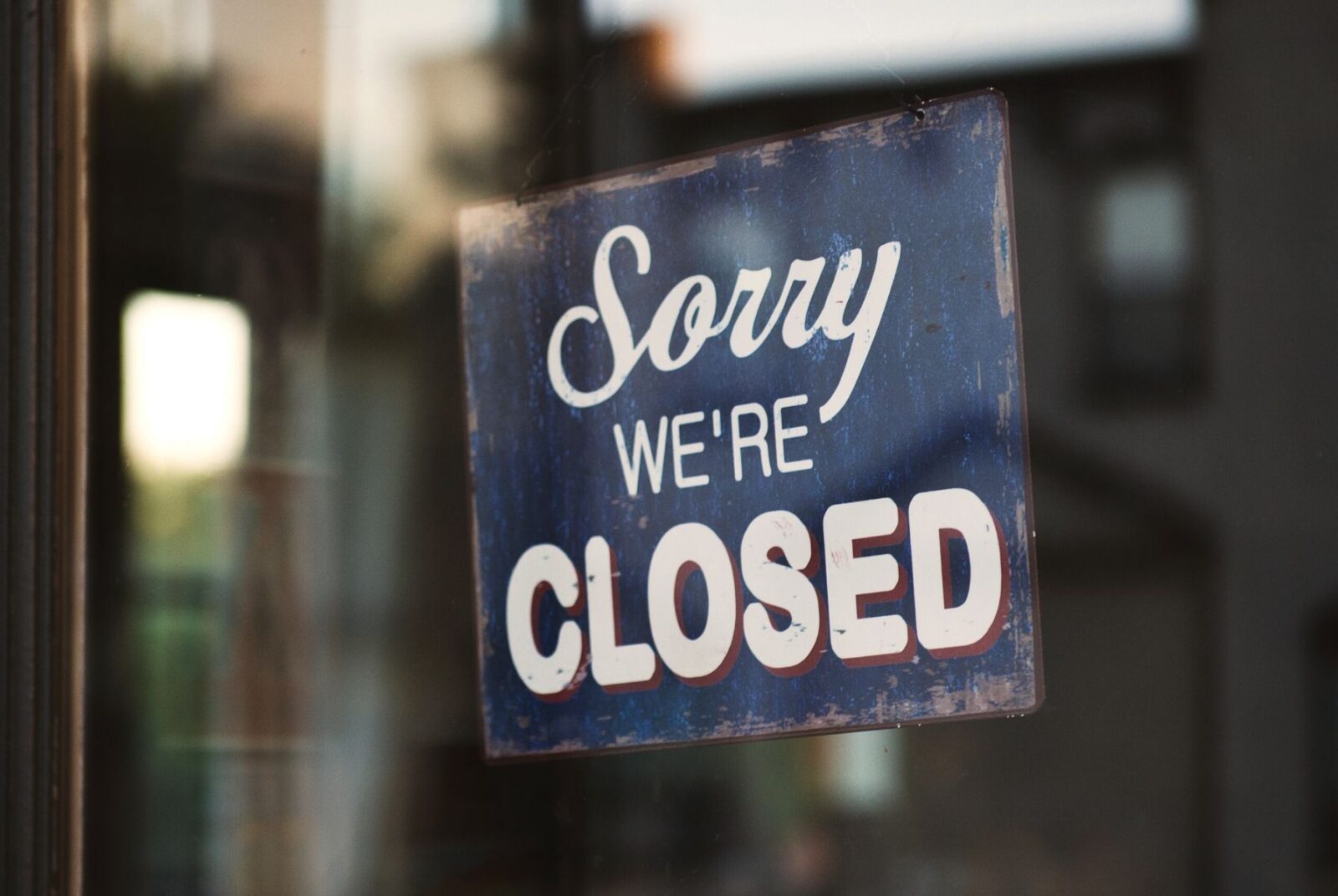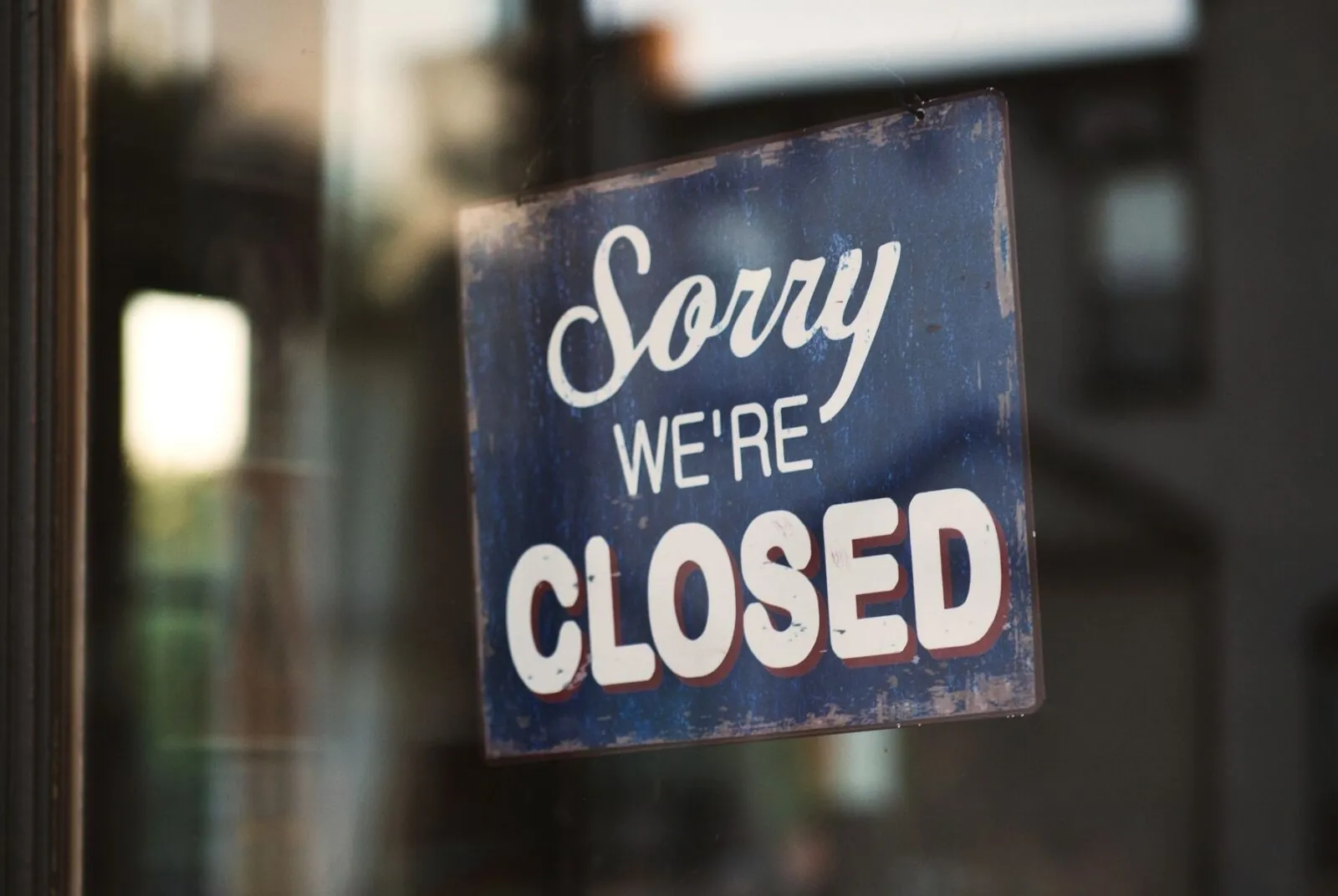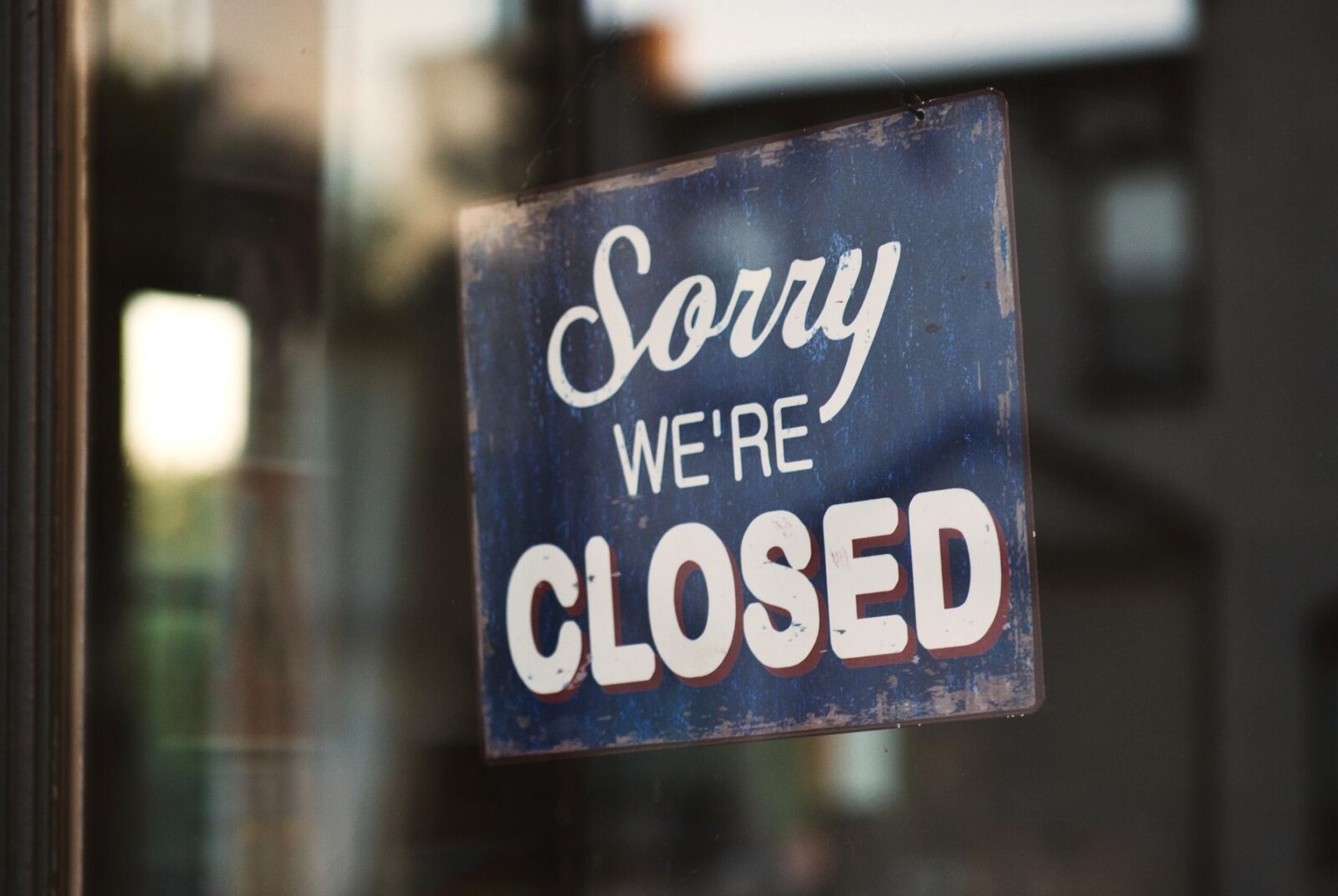
What is Company Liquidation and How Does it Work?
Every year, tens of thousands of companies go into liquidation. So many directors find themselves under a mountain of debts, receiving threatening letters from HMRC and/or winding-up petitions from the court.
What if I told you that this isn’t the end of the world? What if I told you that there are quick and easy ways to solve your problems that could bring you back onto your feet?
In this article, I will address liquidation and its processes as well as ways to avoid going into liquidation altogether in order to give you the tools to make the right decisions for your situation.
So, liquidation, what’s that?
- What is Company Liquidation?
- How Does Company Liquidation Work?
- Types of Liquidation
- The Liquidation Process Explained
- Signs Your Company May Need Liquidation
- Advantages and Disadvantages of Liquidation
- The Role of a Liquidator
- Can I Start a New Company After Liquidation?
- Alternatives to Liquidation
- How Company Debt Can Help with Liquidation
- FAQs on Company Liquidation
What is Company Liquidation?
Liquidation is the formal process of closing a company, usually because it can’t pay its debts or because the shareholders want to end the business.
During liquidation, the company’s assets are sold to pay off its creditors according to their legal order of priority. Once this is done, the company is dissolved and legally ceases to exist[1]Trusted Source – GOV.UK – Strike off your limited company from the Companies Register.
Liquidation can be voluntary, started by the company’s directors or shareholders, or compulsory, forced by creditors through a court order.
The process ensures that the company’s affairs are properly dealt with, but it doesn’t always mean that all creditors will be fully repaid.
At Company Debt, we offer expert guidance and financial advice to help your business, whether insolvent or solvent, through liquidation.
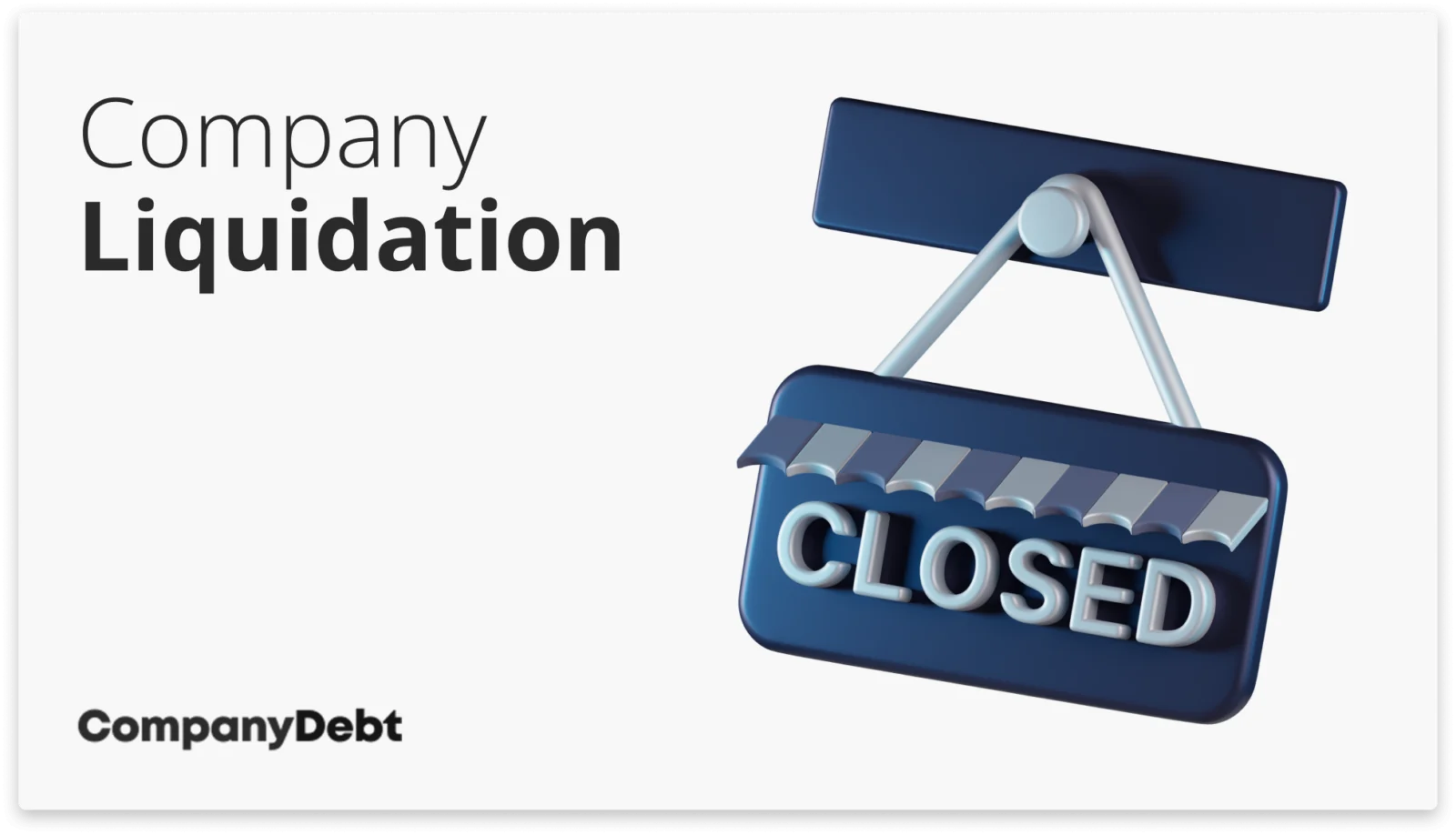
How Does Company Liquidation Work?
Liquidation works by appointing a liquidator, who is a licensed insolvency practitioner, to take control of the company and its assets.
The liquidator’s role is to sell the company’s assets, such as property, equipment, or stock, and use the money raised to pay off creditors in a specific order of priority. During this period, directors lose control of the company, and employees are usually made redundant[2]Trusted Source – GOV.UK – Directors’ Responsibilities in Liquidation.
Once all the assets have been sold and the proceeds distributed to creditors, the liquidator will then apply to have the company removed from the Companies House register.
After this process, the company is officially dissolved, meaning it no longer exists as a legal entity.
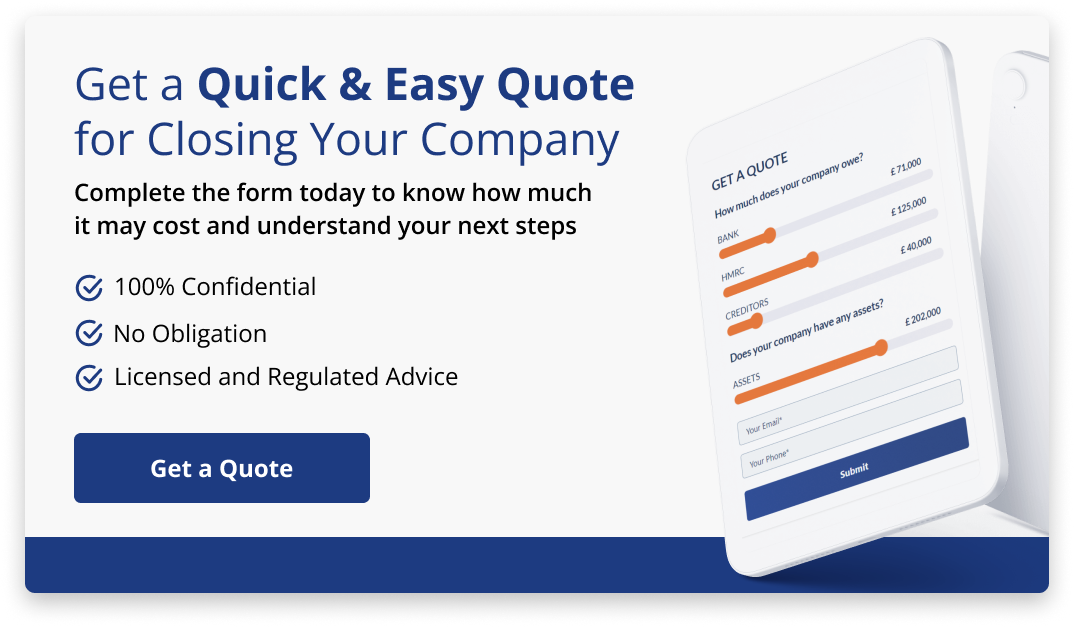
Types of Liquidation
Creditors’ Voluntary Liquidation (CVL)
This process is used when a company can no longer pay its debts and is insolvent. The directors make the decision to close the company, and a licensed insolvency practitioner is appointed as the liquidator. The liquidator takes control of the company, sells off its assets, and uses the proceeds to repay as much of the company’s debts as possible.
Creditors are involved in this process, and although they may not receive the full amount they are owed, the liquidation ensures that the company’s assets are distributed among them according to their order of legal priority.
Compulsory Liquidation
This type of liquidation occurs when a company is forced to close by a court order, typically at the request of creditors who have not been paid. The company is declared insolvent, and a court-appointed liquidator (Official Receiver) takes over control of the company’s affairs.
The Official Receiver’s role is to sell the company’s assets and distribute the funds to creditors according to a legally defined order of priority. This process ends with the company being dissolved and removed from the register at Companies House.
Members’ Voluntary Liquidation (MVL)
This process is used when a company is solvent, meaning it can pay all its debts, but the shareholders decide they no longer wish to continue running the business. The shareholders appoint a licensed insolvency practitioner as the liquidator, who takes charge of selling the company’s assets.
After all debts and obligations are paid, any remaining funds are distributed among the shareholders. An MVL is often chosen when the owners wish to close the company in an orderly manner, such as when they want to retire or the business has fulfilled its purpose.
The Liquidation Process Explained
The liquidation process generally follows these steps:
- Decision to Enter Liquidation: The company’s directors, shareholders, or a court decide to place the company into liquidation.
- Appointment of a Liquidator: A licensed insolvency practitioner is appointed to manage the liquidation process.
- Taking Control of Company Assets: The liquidator takes over control of the company and its assets from the directors and stops all trading activities.
- Assessment of Company Finances: The liquidator reviews the company’s finances and prepares a statement of its assets and debts.
- Selling Assets: The company’s assets are sold to raise funds to repay creditors.
- Distribution of Funds: The liquidator distributes funds to creditors in order: secured, preferential (e.g., employees), then unsecured.
- Investigation of Directors’ Conduct: The liquidator examines directors’ actions before insolvency for any misconduct.
- Final Reporting and Company Dissolution: The liquidator submits a final report to Companies House and applies for the company to be dissolved, completing the process.
How Long Does the Liquidation Process Take?
The complete liquidation process can take around one year on average but longer when a larger company is involved.

Signs Your Company May Need Liquidation
There are always signs that your company is approaching the position of needing to be liquidated. So, what are these signs?
- Struggling to pay bills, wages, or suppliers on time, indicating cash flow problems.
- Receiving demands or threats of legal action from creditors who are chasing unpaid debts.
- The company’s liabilities outweigh its assets, meaning that debts exceed what the business owns.
- Falling behind on tax payments, such as VAT, PAYE, or Corporation Tax, which suggests the company is in financial distress.
- Inability to secure additional funding or loans to keep the business afloat.
- Regularly using personal funds to cover company expenses, indicating the business isn’t generating enough revenue to sustain itself.
- A significant decline in sales, orders or contracts, making it impossible to maintain profitability.
- Repeatedly exceeding agreed overdrafts or borrowing limits with your bank.
These warning signs suggest that liquidation might be the most suitable solution to deal with unmanageable debts and avoid further financial and legal complications.
Advantages and Disadvantages of Liquidation
If you’re a director of a limited company overwhelmed by debts you can’t repay and you just want a way out without rescuing your company, liquidation might seem like your best option.
But what are the actual benefits? What are the drawbacks?
Here are the key points to consider:
Advantages of Liquidation:
- Debt Relief: Liquidation can eliminate your company’s debts. Once the process is complete, creditors can’t pursue you for the company’s unpaid bills, relieving you of financial stress.
- Protection from Legal Action: Starting the liquidation process can protect you from legal actions by creditors, such as court judgments or winding-up petitions.
- Avoiding Wrongful Trading: If you continue trading while insolvent, you risk being made personally liable for company debts. Liquidation helps you avoid this by formally addressing the company’s inability to pay its debts.
- Professional Guidance: A licensed insolvency practitioner will manage the liquidation, handling all the paperwork and communications with creditors, which removes your responsibility and eases your burden.
- Pay Employee Wages: Your employees can claim redundancy pay via the insolvency practitioner. Loyal employees can claim unpaid wages and other entitlements from the government’s National Insurance Fund, providing them with financial support.
- Closure and Peace of Mind: Liquidation brings an orderly end to your company’s activities, relieving your stress and allowing you to move on without ongoing creditor pressure.
Disadvantages of Liquidation:
- Loss of Company Assets: The company’s assets will be sold to repay creditors. This means losing business property, equipment, and any other assets owned by the company.
- Impact on Personal Credit: While company debts are separate from personal debts, liquidation can affect your personal credit rating, especially if you’ve signed personal guarantees.
- Directors Disqualification: Liquidation does not mean director disqualification. Whilst the liquidator is required to investigate the conduct of the directors before the liquidation the chances of being disqualified are extremely slim. In 2022/23 only 3% of directors were disqualified. It is only in the most serious and criminal cases that results in being banned from acting as a director.
- Costs of Liquidation: The process involves fees for the insolvency practitioner and other associated costs. These fees are paid from the company’s assets, which can reduce the amount available to creditors.
- Public Record and Reputation: The liquidation becomes part of the public record. This could affect your reputation and may make it more challenging to start a new business or obtain credit in the future.
- Personal Guarantees: If you’ve given personal guarantees for any company debts, dependent on the agreement’s Terms and Conditions, you may be held personally liable and creditors may still pursue your personal assets after the liquidation to recover those amounts.
- Employee Job Losses: Liquidation results in employees losing their jobs, which can be difficult if you have close working relationships with your staff.
- Supplier Relationships: Any relationships with suppliers and customers will end, which could affect future business dealings if you plan to start a new venture.
It’s crucial to carefully consider these points before deciding on liquidating or rescuing your company.
While it can provide relief from overwhelming debts, the way you close your company matters. Simply dissolving your company without professional guidance can have severe consequences that would seriously affect your future.
You should seek advice from a professional insolvency practitioner who can guide you based on your specific situation and help you explore all available options.
The Role of a Liquidator
A liquidator manages the process of winding up a company, ensuring it’s done efficiently and legally. They take control of the company’s assets, assess its finances, and sell the assets to generate funds.
The proceeds are then distributed to creditors in order: secured creditors first, followed by preferential creditors like employees, and lastly unsecured creditors.
The liquidator also investigates the directors’ actions before insolvency for any misconduct, communicates with creditors, and provides updates, while preparing reports for regulatory bodies like Companies House.
What Happens After I Have Wound Up My Limited Company?
After a company is liquidated, here is what can happen:
- Company Dissolution: The company is removed from the Companies House register and ceases to exist as a legal entity, with all operations permanently coming to a halt.
- Asset Distribution: The liquidator sells the company’s assets and distributes funds in this order: secured creditors first, then preferential creditors (e.g., employees, certain HMRC debts), followed by unsecured creditors. Shareholders usually receive nothing in insolvent liquidations.
- Impact on Directors: About 97% of cases see no action against directors, but the liquidator investigates conduct. Wrongful trading or misconduct can lead to disqualification (3-15 years) and personal liability for debts. Directors with overdrawn loan accounts must repay or face legal action.
- Effect on Employees: All employees are made redundant. They can claim unpaid wages, holiday pay, notice pay, and redundancy pay from the National Insurance Fund.
- Creditor Outcomes: Creditors are notified and can submit claims for amounts owed, receiving partial payment based on available funds.
- Legal and Administrative Procedures: The liquidator manages statutory reporting, submits final accounts to Companies House, settles tax affairs, and may report director misconduct to the Insolvency Service.
- Personal Guarantees: Creditors can pursue directors personally if the director signed a personal guarantee on any company debts.
- Future Business Activities: Directors can start a new company unless disqualified but must follow rules on reusing company names under Section 216 of the Insolvency Act 1986.
Can I Start a New Company After Liquidation?
Yes, you can start a new company after your previous one has been liquidated, but there are important legal restrictions:
- Company Name Restrictions (Section 216 of the Insolvency Act 1986): You’re prohibited from using the same or a similar name as the liquidated company unless you meet specific exceptions:
- Court Permission: Apply for permission within seven days of liquidation.
- Acquisition from Liquidator: Purchase the business from the liquidator and notify all creditors within 28 days.
- Pre-existing Company Exception: A new company has been trading under that name for at least 12 months prior without being dormant.
- Consequences of Breaching Restrictions: Illegally using a prohibited name can lead to personal liability for the new company’s debts, criminal charges, fines, imprisonment, and disqualification from acting as a director.
- Director Responsibilities: If deemed unfit due to misconduct in the liquidated company, you may face disqualification and personal liability for debts.
To start a new company legally, you should avoid using prohibited names unless you qualify for an exception; do not use the same or a similar name as the liquidated company.
It’s important to seek professional advice by consulting an insolvency practitioner or legal advisor to navigate the process.
Additionally, you must comply with all legal procedures; if you are using an exception to the name restriction, follow all required steps such as court applications or creditor notifications.
To surmise, starting a new company after liquidation is possible, but you must adhere to legal restrictions regarding company names and director conduct to avoid serious penalties.
Alternatives to Liquidation
If your limited company is facing financial difficulties but you want to avoid liquidation, there are several options that might help you resolve the situation:
- Company Voluntary Arrangement (CVA): A CVA is a formal, legally binding agreement to repay debts over three to five years while allowing directors to retain control of the company. An Insolvency Practitioner can halt winding-up petitions with a moratorium during the CVA setup.
The arrangement allows continued trading, improves cash flow, protects jobs, and may reduce debt. However, it requires approval from 75% of creditors by value and strict adherence to the repayment plan. - Administration: In this process, a licensed Insolvency Practitioner restructures or sells the company to achieve better returns than liquidation. It provides legal protection from creditors and may preserve the business and jobs.
The Insolvency Practitioner ensures preferential creditors, like employees, are paid. Administration can be costly, so it’s suitable if the company has substantial assets, orders, or cash. - Time to Pay Arrangement (TTP) with HMRC: A TTP is an informal agreement to pay outstanding taxes over about 12 months, relieving immediate tax pressures. HMRC suspends enforcement if terms are met, but default can lead to winding-up petitions. Eligibility requires the ability to meet overheads, maintain cash flow, and comply with future tax obligations.
- Informal Negotiations with Creditors: You can renegotiate payment terms directly with creditors without formal proceedings. This approach offers flexibility and speed but is not legally binding; creditors may still take action if terms are breached or their circumstances change.
- Refinancing or Restructuring: This involves securing new funding or reorganizing operations to enhance capital and efficiency, which may involve additional debt or significant structural changes. Professional advice is crucial when insolvent, and contingent liabilities like potential redundancies must be considered.
- Company Dissolution (Strike Off): If the company is solvent and inactive, you can apply for strike-off via a DS01 form with a £10 fee, taking about three months. The company will be advertised in the London Gazette. Note that dissolving an insolvent company does not resolve debts; dissolved companies are reported to HMRC, and debts can be pursued for up to six years, or 20 in fraud cases.
- Pre-Pack Administration: This involves arranging the sale of company assets to a third party, often existing directors, to maximize creditor returns. Administration halts legal action during the sale process, typically a few weeks, and accelerates creditor payments with their approval. Transparency is essential to avoid misconduct allegations, overseen by the Pre-Pack Pool.
- Equity Investment: This option entails attracting investors who provide capital in exchange for company shares, enhancing cash flow without increasing debt and potentially adding expertise.
It requires demonstrating potential through a strong future sales pipeline, assets supporting investment, a clear business plan and strategy, overhead reduction or strong future cash flow, and a plan for returning investment capital. Investors may seek significant equity stakes, such as 40%. - Invoice Factoring or Financing: This allows you to sell unpaid invoices at a discount for immediate cash, providing quick funds but reducing overall revenue due to fees. Overdrafts are not permitted under this arrangement, and it may affect customer relationships if not managed properly.
How Company Debt Can Help with Liquidation
We know that liquidation can be complex and challenging for everyone involved. Our goal is to reduce that burden via empathetic and professional support throughout, helping you navigate this challenging period with confidence.
Our licensed insolvency practitioners (IPs) are experts in handling every aspect of the liquidation process, from initial consultations to final dissolution. We’ll ensure your liquidation process follows all legal requirements, minimising the risk of penalties or legal complications.
If you need help understanding the best way forward for your company, use the live chat during working hours, or call us on 0800 074 6757.
FAQs on Company Liquidation
Are Liquidation and Insolvency the Same Thing?
Insolvency
Insolvency occurs when a company cannot meet its debt obligations as they come due (cash flow insolvency) or when its liabilities exceed its assets (balance sheet insolvency).
The balance sheet test includes all liabilities, even contingent ones like potential future costs (e.g., redundancy or pension payments).
Directors must act in the best interests of shareholders until the company becomes insolvent. Once insolvent, they are legally obligated to act in the best interests of creditors.
Continuing to trade while knowingly insolvent can lead to accusations of wrongful trading, resulting in personal liability for company debts and possible disqualification from directorship.
Liquidation
Liquidation is the formal legal process of winding up a company’s affairs, selling its assets, and distributing the proceeds to creditors and shareholders. It applies to both insolvent and solvent companies and comes in several forms:
- Creditors’ Voluntary Liquidation (CVL): Initiated by directors and shareholders when an insolvent company cannot continue trading.
- Compulsory Liquidation: Enforced by court order, usually after a creditor’s petition for unpaid debts.
- Members’ Voluntary Liquidation (MVL): Used by solvent companies that choose to close down and distribute assets to shareholders.
Liquidation results in the company ceasing to exist and being struck off the Companies Register.
Key Differences
The key differences are that insolvency is a financial condition indicating an inability to pay debts, whereas liquidation is a legal procedure to close the company and distribute assets.
Insolvency does not always lead to liquidation; alternatives may include restructuring or entering into a Company Voluntary Arrangement (CVA).
In summary, insolvency is the financial state of being unable to meet debt obligations, prompting directors to take specific actions to protect creditors. Liquidation is just one possible outcome—a legal process that ends the company’s existence.
What is the Difference Between Bankruptcy and Liquidation?
Bankruptcy and liquidation are both insolvency processes but apply to different entities.
Bankruptcy pertains to individuals who cannot pay their personal debts, involving a trustee managing their assets and discharging debts, typically within a year.
Liquidation applies to companies that are insolvent and unable to pay their debts, where a liquidator sells the company’s assets to repay creditors and then dissolves the company.
While bankruptcy affects only the individual’s credit, liquidation impacts the company’s credit and may also affect directors’ personal credit if they have provided personal guarantees.
Is it Possible to Liquidate a Company for Free?
Generally, liquidating a company cannot be done for free as it involves certain unavoidable costs. These costs include fees for a licensed insolvency practitioner, legal expenses, and administrative charges necessary to properly wind up the company’s affairs.
While it might be possible to reduce some expenses by handling certain tasks yourself, such as preparing documents or communicating with creditors, completely eliminating all costs is unlikely.
Additionally, attempting a DIY liquidation without professional guidance can lead to mistakes and potential legal issues. Therefore, it is essential to budget for these fees and seek professional advice to ensure the liquidation process is conducted correctly and efficiently.
What Happens to the Shareholders of a Company During Liquidation?
During liquidation, the fate of shareholders depends on whether the company is solvent or insolvent:
- In Solvent Liquidation (Members’ Voluntary Liquidation or MVL): Shareholders are paid any remaining funds after all the company’s debts and liabilities have been fully settled. The liquidator sells the company’s assets, settles debts, and then distributes the leftover funds among the shareholders in proportion to their shareholdings.
- In Insolvent Liquidation (Creditors’ Voluntary Liquidation or Compulsory Liquidation): Shareholders are the last to be paid, meaning they typically receive nothing. The company’s assets are sold, and the funds are used to pay creditors in a specific order of priority (secured creditors first, followed by preferential and unsecured creditors). Only if any funds remain after all creditors are paid will shareholders receive anything, but this is rare in insolvent cases.
In both cases, shareholders lose their ownership in the company as it ceases to exist once the liquidation process is complete.
Does Liquidation Affect My Credit Rating?
Generally, your personal credit rating is not directly affected when your limited company goes into liquidation because the company is a separate legal entity.
However, there are exceptions where your personal credit could be impacted:
- Personal Guarantees: If you’ve signed personal guarantees for company debts, you’re personally liable if the company can’t repay them, which can harm your credit rating.
- Director’s Loan Accounts: If you owe money to the company through an overdrawn director’s loan account and can’t repay it, legal action may be taken against you, negatively affecting your credit score.
- Wrongful Trading or Misconduct: If found guilty of wrongful trading or misconduct during liquidation, you may be held personally liable for company debts, damaging your credit rating and possibly leading to disqualification as a director.
- Credit Applications: Credit agencies might note your association with a liquidated company, influencing lenders’ decisions even if your credit score remains unchanged.
While liquidation doesn’t automatically harm your personal credit rating, personal liabilities from guarantees, unpaid debts to the company, or misconduct can negatively affect it.
Does Liquidation Write Off Company Debt?
Yes, liquidation can write off unsecured company debts. When a company is liquidated, its assets are sold to repay creditors, and any remaining unsecured debts are typically discharged. Key points to consider:
- Tax Debts: HMRC is a preferential creditor for some taxes (e.g., VAT, PAYE), so repayment of these debts is prioritised. However, they will be written off if there are no assets.
- Unsecured Debts: Debts like trade creditors and unpaid bills are usually written off if assets don’t fully cover them after liquidation.
- Secured Debts: Secured debts are paid first from the sale of secured assets. Any shortfall may become unsecured and could be written off.
- Personal Guarantees: If you’ve given personal guarantees for company debts, you’re personally liable, and creditors can pursue you after liquidation.
- Employee Claims: Employees can claim unpaid wages and redundancy from the government’s insolvency fund if company assets are insufficient.
- Payment Hierarchy: Debts are paid in order: secured creditors first, then preferential creditors (like employees and certain taxes), followed by unsecured creditors.
What Happens to My CBILS Loan During Liquidation?
When your company enters liquidation, the Coronavirus Business Interruption Loan Scheme (CBILS) loan becomes a debt to be addressed like any other company liability. The liquidator will sell the company’s assets to repay creditors, including the CBILS lender.
Although the loan is 80% government-guaranteed, this guarantee protects the lender, not you or the company; the company remains liable for the full loan amount until assets are realised.
If you provided a personal guarantee for a CBILS loan over £250,000 (personal guarantees were not allowed for loans under £250,000), you may be personally liable for a portion of the debt if the company’s assets are insufficient to repay it.
Misuse of CBILS funds or wrongful trading can lead to personal liability and potential disqualification as a director.
What is a Liquidation Committee?
A Liquidation Committee is a group of key creditors formed during a company’s liquidation to oversee the process and protect their interests.
Typically made up of major suppliers or financial institutions, the committee collaborates with the liquidator to ensure that assets are distributed fairly and efficiently.
They review the liquidator’s reports, approve significant decisions, and help address any concerns that arise.
By facilitating clear communication and accountability, the Liquidation Committee ensures that the liquidation proceeds smoothly and aims to maximise returns for all creditors involved.
The primary sources for this article are listed below, including the relevant laws and Acts which provide their legal basis.
You can learn more about our standards for producing accurate, unbiased content in our editorial policy here.
- Trusted Source – GOV.UK – Strike off your limited company from the Companies Register
- Trusted Source – GOV.UK – Directors’ Responsibilities in Liquidation






